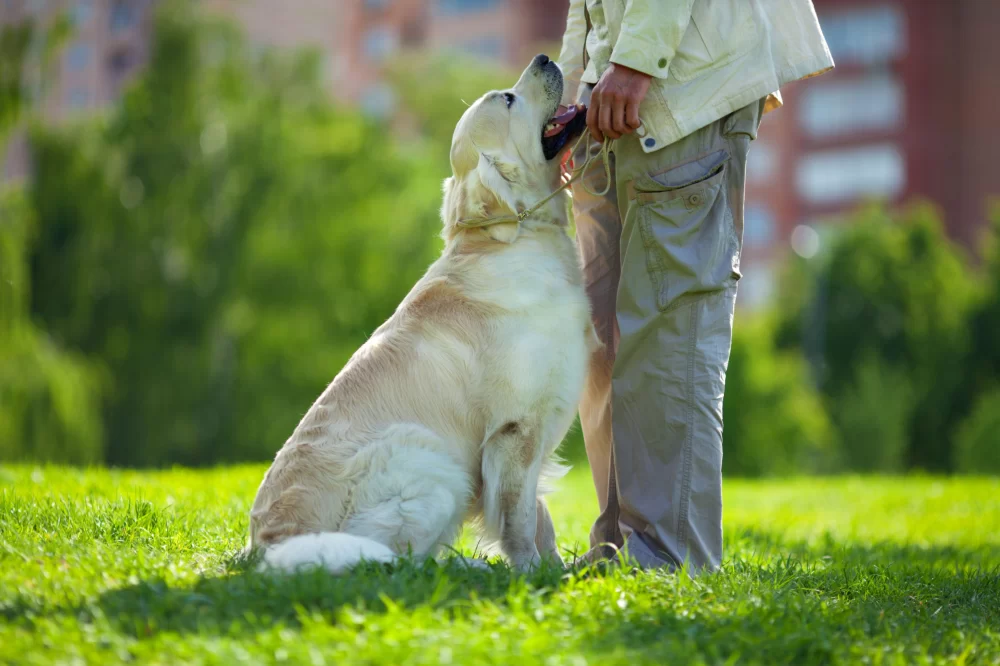How to Train Your Dog to Walk Beside You
Training your dog to walk beside you is an essential skill that not only ensures their safety but also strengthens the bond between you and your furry companion. A well-trained dog can enjoy a walk without pulling, lunging, or becoming distracted, making the experience more enjoyable for both of you. In this guide, we'll go over step-by-step methods to help you train your dog to walk calmly beside you. We will also dive into some common challenges that pet owners face when teaching this skill and offer solutions to overcome them.
The Basics of Leash Training
Before jumping into training techniques, it's important to understand the fundamentals of leash training. The key is to teach your dog that walking beside you on a leash is a rewarding and enjoyable experience. The first thing to consider is the proper walking gear. Ensure your dog is wearing a comfortable, well-fitting harness or collar, and that the leash is not too long or too short. A standard 4-6 foot leash is ideal for most dogs, as it gives them enough freedom to move while still allowing you to maintain control.
Start by walking in a distraction-free environment. This could be your backyard or a quiet street where your dog can focus on you without too many external stimuli. Begin walking at a normal pace and pay attention to your dog’s behavior. If they pull ahead or lag behind, stop walking and wait until they return to your side before continuing. This teaches them that walking ahead results in a stop in progress, while walking beside you leads to continued movement.
Step-by-Step Guide to Teaching Your Dog to Walk Beside You
1. Start with Basic Commands: Before you start walking, ensure your dog is familiar with basic commands such as "sit," "stay," and "heel." The command "heel" is the one most commonly used for walking beside you. You’ll want to pair this command with the action of walking next to you. When your dog starts to pull ahead or veer off course, simply stop and say "heel." Reward them with praise and treats when they return to your side.
2. Use Positive Reinforcement: Dogs respond best to positive reinforcement. Whenever your dog walks beside you without pulling, reward them with a treat, praise, or their favorite toy. This will create a positive association with walking next to you, encouraging them to repeat the behavior.
3. Consistency is Key: Consistency is vital in any dog training program. If you let your dog pull ahead during one walk and then expect them to walk calmly by your side the next time, they will get confused. Always reinforce the same rules and techniques each time you go out for a walk.
Dealing with Common Challenges
Training your dog to walk beside you might not be a smooth process right away. Many dogs, especially puppies or high-energy breeds, tend to get excited during walks, making them prone to pulling or lunging. Here are a few common challenges and solutions:
Problem #1: Your Dog Pulls on the Leash
This is a common issue that many dog owners face. If your dog pulls, it can be frustrating and tiring for both you and your pet. One effective technique to address this is to stop walking every time your dog pulls. Wait for them to calm down and return to your side before continuing. This teaches them that pulling will not get them where they want to go.
Problem #2: Distractions During Walks
Dogs are naturally curious and may get distracted by other dogs, people, or objects while walking. To help your dog stay focused, practice walking in areas with fewer distractions and gradually increase the level of difficulty as they improve. You can also use high-value treats or a favorite toy to keep their attention on you during the walk.
Problem #3: Your Dog Seems Uninterested in Walking
If your dog seems disinterested in walking beside you, it might be due to boredom or lack of motivation. In this case, try making walks more engaging by varying the route, stopping for short play sessions, or introducing new activities like agility training. You can also offer treats or praise during the walk to make it a fun experience.
Building a Routine and Gradual Progress
Building a successful walking routine takes time and patience. It's important to start slow and increase the difficulty as your dog becomes more proficient. Begin with short walks, and as your dog learns to walk calmly beside you, gradually increase the duration and distance. Eventually, your dog will learn that walking beside you is the best way to enjoy their daily walks.
Real-Life Success Story
Meet Sarah and her dog, Max. When Sarah first adopted Max, he was a young Labrador full of energy and excitement. Every time they went on a walk, Max would pull and drag her all over the place. Sarah was frustrated and nearly gave up, but then she decided to stick with a training plan.
By using the methods outlined above, Sarah started incorporating the "heel" command during their walks. She used high-value treats to reward Max whenever he walked beside her and remained consistent with her training. After several weeks of practice, Max began walking calmly by Sarah’s side. Now, their walks are a pleasant bonding time, and Max is a model of good behavior.
Conclusion: The Reward of a Calm Walk
Training your dog to walk beside you is a valuable skill that will improve both your and your dog’s quality of life. Through consistency, patience, and positive reinforcement, you can teach your dog to be the ideal walking companion. Not only will it help you avoid the frustration of a pulling dog, but it will also allow you to enjoy the outdoors with your furry friend in a safe and enjoyable way.
If you're looking for more personalized advice or professional dog training services, consider reaching out to Hidden Brook Veterinary, where our experts can assist you with tailored solutions for your dog's specific needs.












